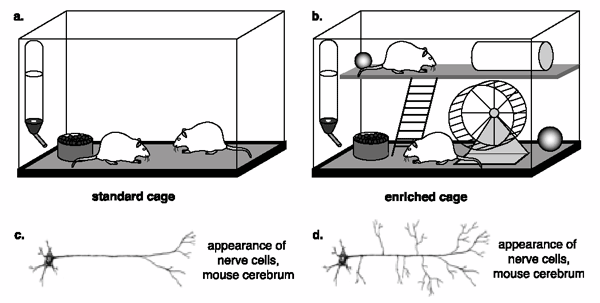A
study of conditions associated with the socioeconomic standing (SES) of a
household holds cognitive ability as a product (Hackman 2015). Factors contributing to SES include income
and social standing from educational level and occupation. Various research
groups all indicate that the better the SES, the better students performed on
the given tasks. For example, in a study done of kindergarten students, those
who fell in the median SES range outscored their lower ended classmates. From
the metastudy by Hackman, results attained tested were based on the following
tests take “Lipina et al. [27] reported that infants from lower
SES families are, on average, less advanced in the working memory and
inhibitory control abilities needed to pass the‘A not B’ test [34]. In a
study of 6 year-olds using Posner’s Attention Network Task [35],
Mezzacappa found pronounced SES disparities in the ‘executive attention’
measure [29]. Studies of adults with neuropsychological tests converge on
the same conclusion, showing SES disparities in tests of executive
function [30,31]” (Hackman). Behind the didactic advantages resulting from
superior SES are neurophysiological implications. Hackman reported retardation
in cortex development in children of lower SES, but other unknown deficiencies
still need to be studied.
 In a study of rodent neurological development
following environmental enrichment measured their cognitive abilities by
measuring locomotor activity. To begin, rats were placed in different a
variety of environments, “ In
the physically enriched condition (PE), animals were single-housed in standard
rat cages (40 cm × 20 cm × 20 cm) and a
variety of toys (durable dog and cat toys, e.g., colored textured balls, rings,
and bones) were placed in the cage to provide physical and tactile stimulation.
Objects were removed two to three times per week and were replaced with new
object…” (Elliot). Further the rats were
given greater social opportunities “In the socially enriched condition (SE),
animals were housed in groups of three same-sex rats in larger rat cages
(46 cm × 36 cm × 20 cm) to avoid social
crowding. In the physically and socially enriched condition PESE, animals were
housed in groups of three same-sex rats in the same-sized cages
(46 cm × 36 cm × 20 cm) and were provided
toys according to the procedures described above” (Elliot). Once acclimated,
rats were observed and periodically locomotive activity, a function of neural
development was measured. Results indicated that rats placed in environmentally
enriched areas recorded higher levels of locomotion compared to those in less
enriched. This indicates that neural development in the enriched rats is
greater than that of the those deprived of toys and company. One suggestion for
this account is greater stimulation associated with social interaction, but
further studies are required to test the effect of social interaction only as
the access to toys could have impacted cognitive development as well.
In a study of rodent neurological development
following environmental enrichment measured their cognitive abilities by
measuring locomotor activity. To begin, rats were placed in different a
variety of environments, “ In
the physically enriched condition (PE), animals were single-housed in standard
rat cages (40 cm × 20 cm × 20 cm) and a
variety of toys (durable dog and cat toys, e.g., colored textured balls, rings,
and bones) were placed in the cage to provide physical and tactile stimulation.
Objects were removed two to three times per week and were replaced with new
object…” (Elliot). Further the rats were
given greater social opportunities “In the socially enriched condition (SE),
animals were housed in groups of three same-sex rats in larger rat cages
(46 cm × 36 cm × 20 cm) to avoid social
crowding. In the physically and socially enriched condition PESE, animals were
housed in groups of three same-sex rats in the same-sized cages
(46 cm × 36 cm × 20 cm) and were provided
toys according to the procedures described above” (Elliot). Once acclimated,
rats were observed and periodically locomotive activity, a function of neural
development was measured. Results indicated that rats placed in environmentally
enriched areas recorded higher levels of locomotion compared to those in less
enriched. This indicates that neural development in the enriched rats is
greater than that of the those deprived of toys and company. One suggestion for
this account is greater stimulation associated with social interaction, but
further studies are required to test the effect of social interaction only as
the access to toys could have impacted cognitive development as well.
Works
Cited:
Elliot, Brenda.
"Effects of Social and Physical Enrichment on Open Field Activity Differ
in Male and Female Sprague–Dawley Rats." Effects of Social and Physical
Enrichment on Open Field Activity Differ in Male and Female Sprague–Dawley Rats.
Elsevier, n.d. Web. 09 Dec. 2015.
Hackman, Daniel.
"Socioeconomic Status and the Developing Brain." Cell Press
(2009): n. pag. Web.
Image URL:
https://scientiaportal.files.wordpress.com/2015/11/mice-raised-in-an-impoverished-environment-a-show-less-dendrite-growth-c-than-do-mice-raised-in-an-enriched-environment-b-dfor-your-classroom-useonly.gif?w=638&h=328
Image URL:
https://scientiaportal.files.wordpress.com/2015/11/mice-raised-in-an-impoverished-environment-a-show-less-dendrite-growth-c-than-do-mice-raised-in-an-enriched-environment-b-dfor-your-classroom-useonly.gif?w=638&h=328

Assignment Writing Services UK
ReplyDeleteLaw Assignment Writing Help
Essay Writing Services
Assignment Help UK
Essay Writing Services
Assignment Help UK
Assignment Writing Services
Marketing Dissertation Writing Services
Law Dissertation Help
Law Essay Help UK